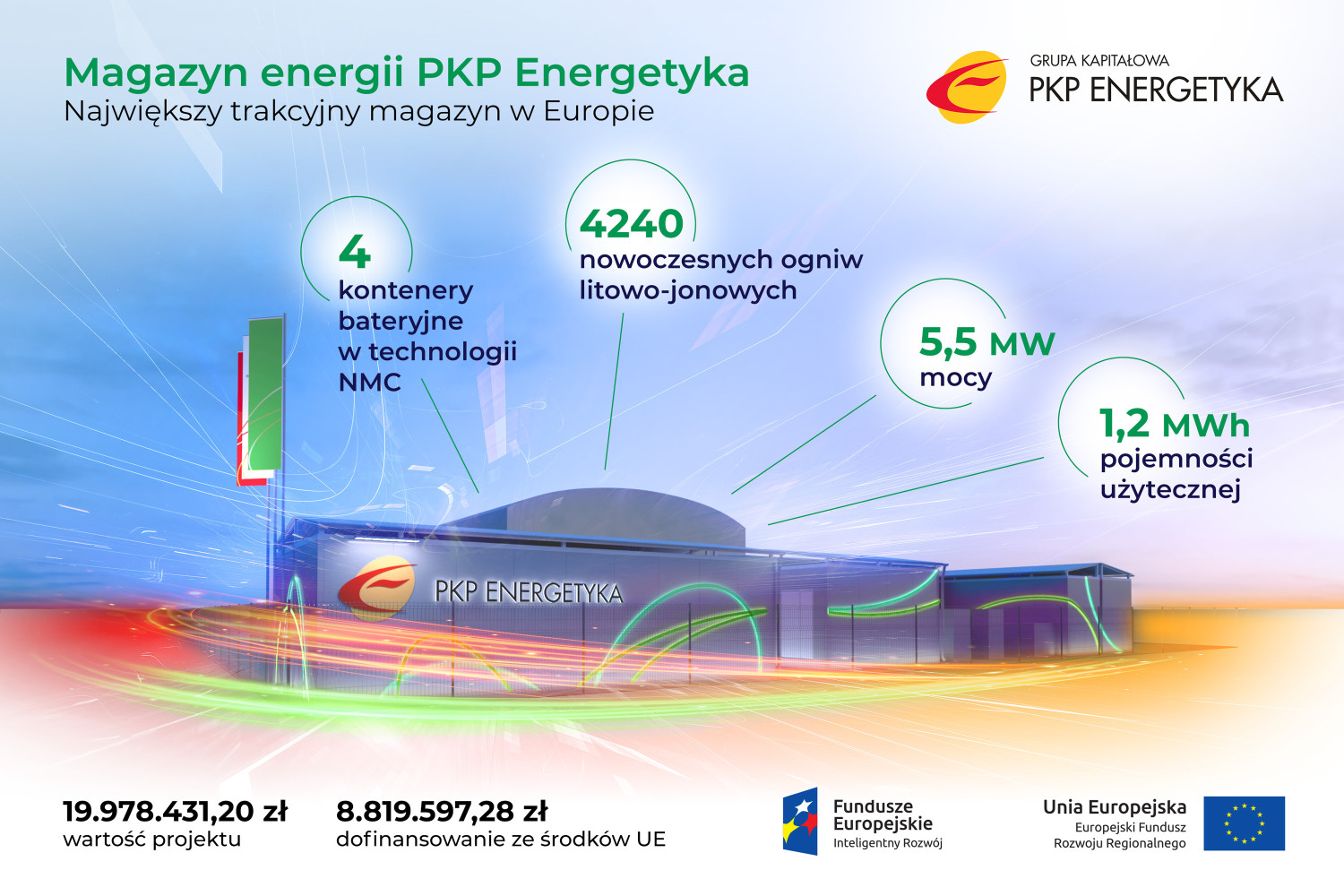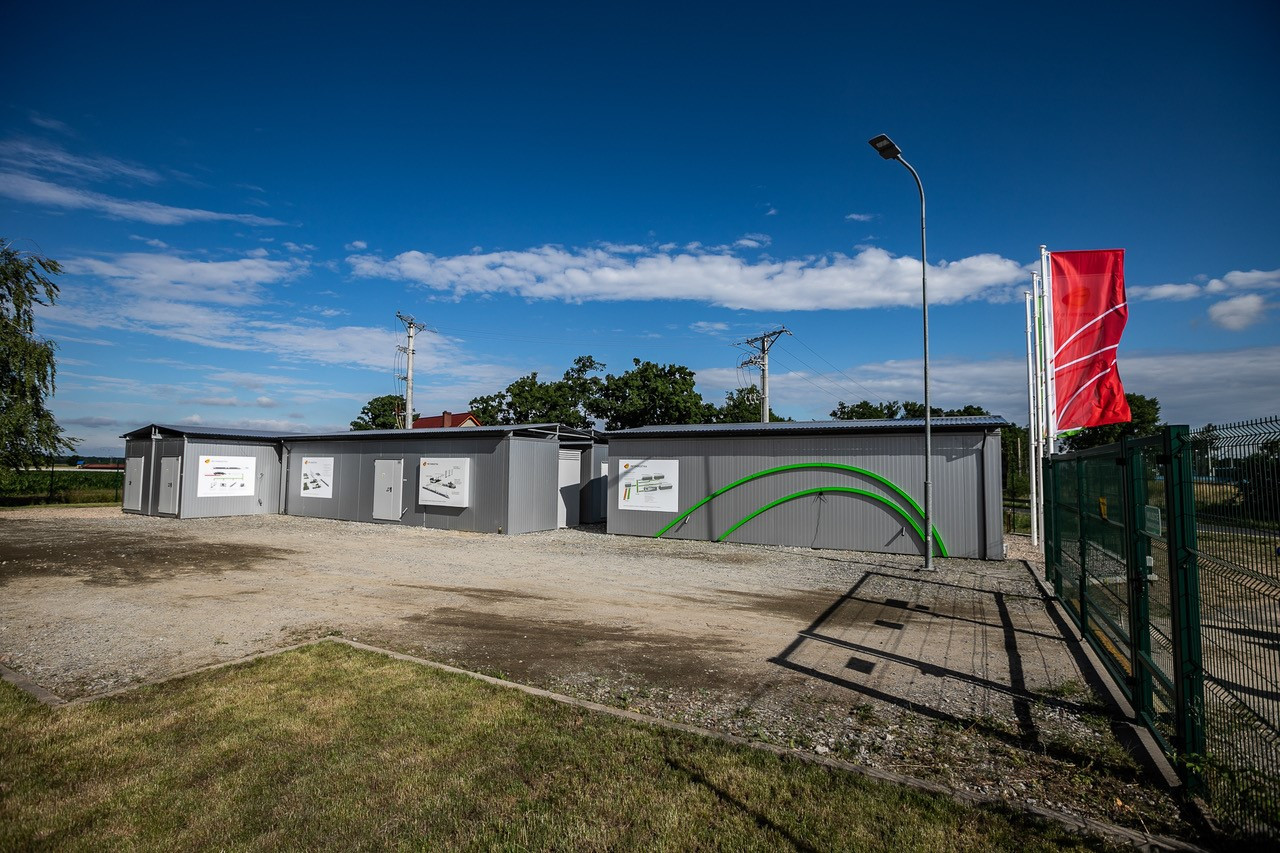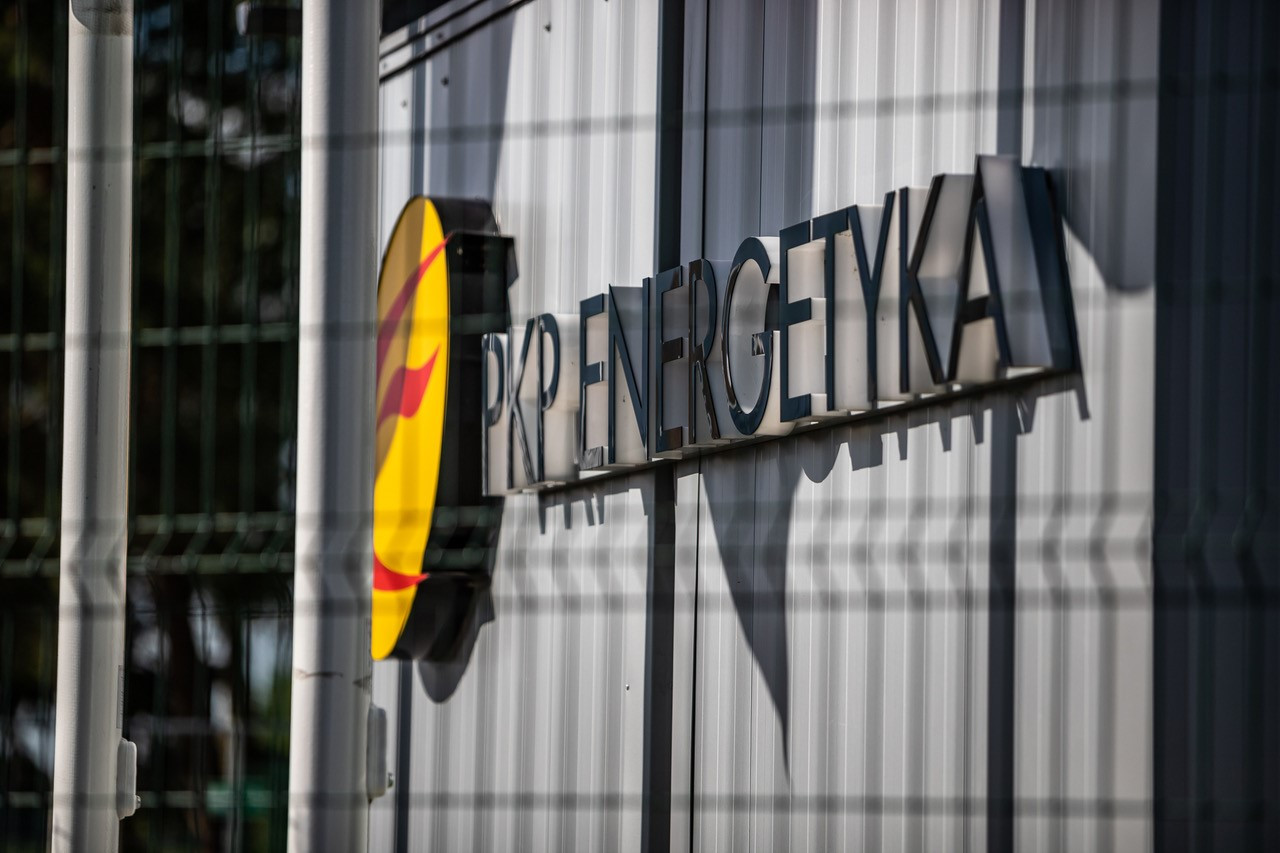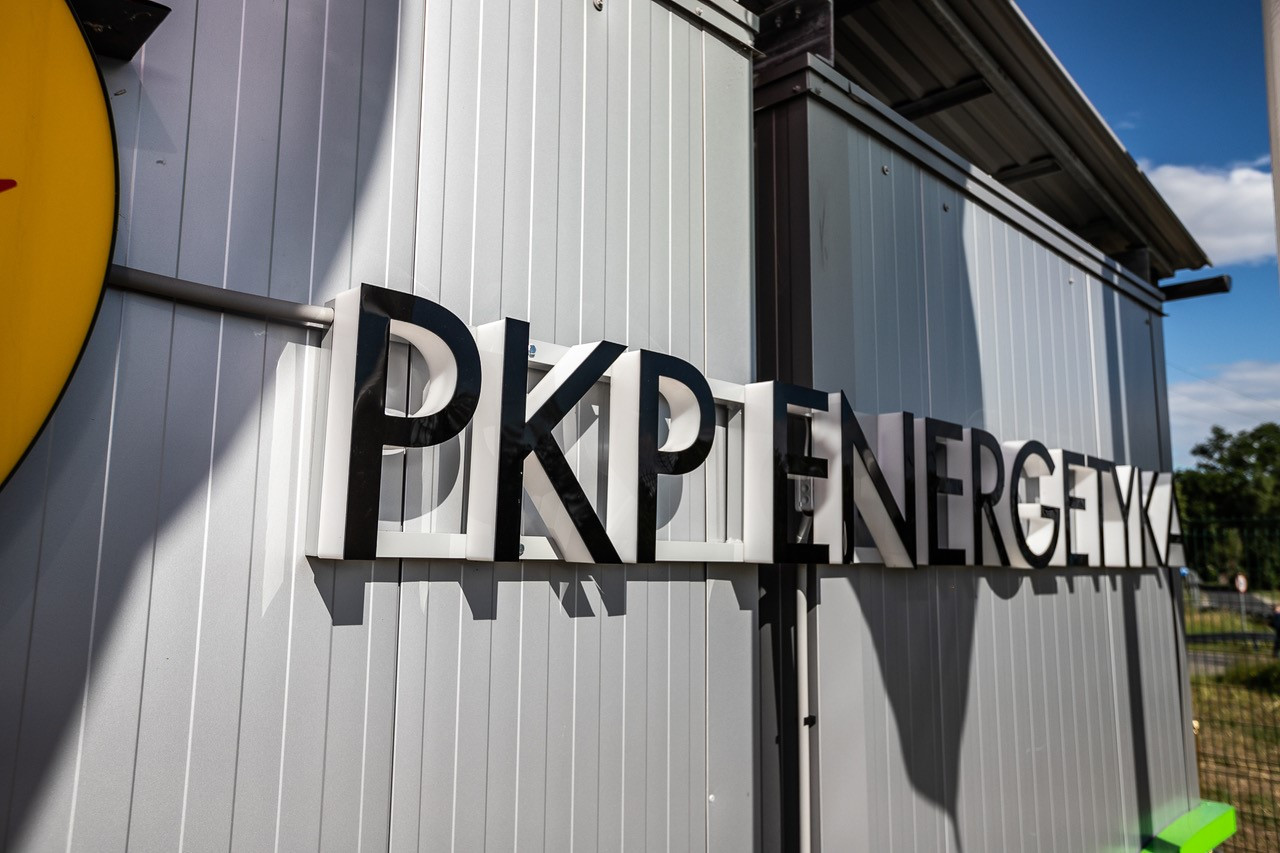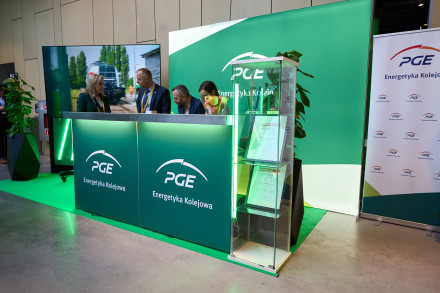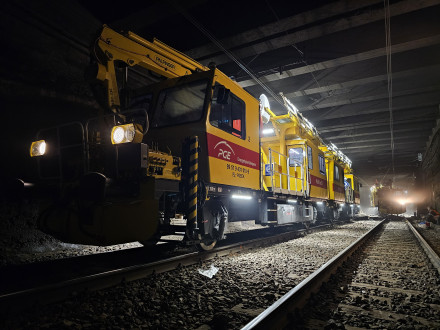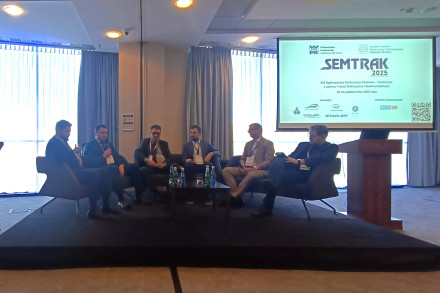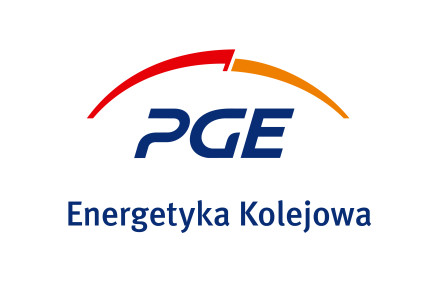PKP Energetyka has launched Europe's largest traction energy storage facility to power the Polish railway
01.07.2021, 8min read
The energy reservoir, which was built in Garbce, in the commune of Żmigród (50 km from Wrocław in Lower Silesia Region, Poland), can single power a train traveling at a speed of 160 km per hour. This is made possible by four battery containers with a total of 4,240 modern lithium-ion cells. The storage facility will strengthen the security and quality of energy supply to the railways, balance the power drawn from the Polish National Power System, and allow for more efficient use of renewable energy sources under the Green Rail Program. The value of the project is nearly PLN 20 million (ca EUR 4.4 million). The storage facility was created in cooperation with the University of Zielona Góra.
The plant in Garbce, with a capacity of 5.5 MW and a usable capacity of 1.2 MWh, is the largest energy storage facility working for traction purposes in Europe. The four containers use lithium-ion batteries made with NMC technology. This solution takes into account the nature of rail power, allowing the storage facility to charge slowly and release stored energy quickly when a train passes. The storage facility is capable of powering even the fastest trains, including Pendolino, within few seconds. At the heart of the storage facility is a DC/DC power converter that operates directly on DC/DC voltage, an innovative solution on a European scale. In the case of other DC-powered rail systems, traction storage facilities yield AC output, forcing additional DC/AC/DC conversion. Bypassing this transformation significantly improves storage facility operations and results in energy savings that are not lost in the transition stages.
„During three years of intensive work, we created a solution from scratch that is unique in Europe, despite the pandemic. It takes into account the specificity of the Polish railways and the national power supply system by defining the optimal values of power and capacity. This was possible, among other things, through developing a control algorithm and a selection of energy storage facility parameters. I am glad that this task has been entrusted to our Polish, talented scientists. Together with PKP Energetyka, we worked out a solution that will not only serve its purpose for the next 15 years but will also be the basis for multiplying this type of equipment in other locations,” said Professor Grzegorz Benysek, project research, and development manager.
This is the first of about 300 „power banks” planned for the railways in Poland. Each will be part of a broader power ecosystem that also includes a traction substation and eventually a photovoltaic for other renewable energy sources – creating a Local Balancing Area (Polish: Lokalny Obszar Bilansowania, LOB). The storage facility is fully metered and automated, which allows for remote control and configuration of selected need-based parameters.
„PKP Energetyka's investment in Garbce is an extremely important idea, which is entirely consistent with Polish governmental and EU's policies under the European Green Deal. Together, we are building a comfortable, safe and predictable railway, bearing in mind that it is the safest and most environmentally friendly mode of transport” - wrote Andrzej Bittel, Secretary of State at the Polish Ministry of Infrastructure, in a letter to the participants of the ceremonial launch of facility in Garbce.
„At PKP Energetyka, we are consistently and actively expanding the distribution infrastructure in response to the growing needs of Polish railways. In 10 years, the capacity of the rail system will increase by as much as 42% – up to 6.8 GW. Importantly, the facilities under construction are modern and digitized in the 4.0 formula. This means that we apply Business Data Analytics, Artificial Intelligence and Machine Learning systems, which guarantees that e.g. the energy storage facility opened today will perform its stabilization and efficiency functions even better,” commented Marek Kleszczewski, Member of the PKP Energetyka Management Board.
„In line with our mission of 'Supporting the development of Polish railways' we implement innovative projects that increase the competitiveness of this type of transport. Energy storage technology has dual benefits: it stabilizes the power system (by increasing the volume of distributed energy without the need to increase connection capacity) and allows for the transformation of railways to RES powering. As part of the Green Rail Program, we need to ensure the stability of the energy supply even when it is cloudy or windless. That's why we're investing in state-of-the-art energy storage that complements our Smart Integrated Rail Energy Distribution Management System. We rely on Polish technological thought, so once again, we are working with Polish universities and domestic technology suppliers,” said Leszek Hołda, Member of the PKP Energetyka Management Board.
The location of the storage facility is no accident. Lower Silesia is a region with rich railway traditions, a dense network of connections, and its own, one of the most dynamically developing regional railways. According to Polish Office of Rail Transport (Urząd Transportu Kolejowego, UTK) data, it’s the most used province in Poland in terms of rail transportation in 2020. The Marshall's Office there is taking over and repairing more railway lines of local importance. Koleje Dolnośląskie, which is owned by the office, is increasing the number of connections and investing in modern rolling stock – including hybrid vehicles. The region is also quite important when it comes to the technicality and innovation of rail in our country. 10 km from Garbce, in the same commune of Żmigród, there is a specialized test track belonging to the Railway Institute, where newly constructed railway vehicles are tested.
„The further development of sustainable railway transport is one of our priorities. Therefore, I am glad that a railway energy storage facility has been built in our region. Such a modern investment will allow to optimize the costs of railway connections, and further increase their number. We must ensure that the cost of railway maintenance is as low as possible, and also reduce its impact on the environment, although it is already low, compared to other means of public transport. The planned photovoltaic farm in this area is consistent with our assumption that the share of energy from renewable sources will increase to 22 percent by the end of this decade” said Tymoteusz Myrda, Member of the Board of the Lower Silesia Province.
The storage system suppliers for PKP Energetyka are: the consortium of My-Soft sp. z o.o. and Impact Clean Power Technology S.A. as well as ELESTER-PKP sp. z o.o. and the University of Zielona Góra. The value of the project is PLN 19,978,431.20, EU co-financing is PLN 8,819,597.28.
